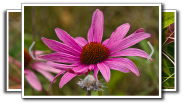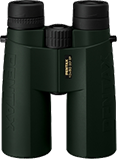bimaculate longhorn beetle
(Molorchus bimaculatus bimaculatus)
Conservation • Description • Habitat • Ecology • Distribution • Taxonomy
|
|
||||||||||||||
Description |
Bimaculate longhorn beetle is a small, early season, round-necked longhorn beetle. It occurs in the United States and southern Canada east of the Great Plains. Adults are active from March through June. They feed on the flowers of various species, including sumac, plum, apple, and dogwood. The larvae are found on the branches of numerous hardwood trees and vines, including grape, hackberry, redbud, and maple. They feed on wood, creating mines under the bark of dead branches. Adults are ⅛″ to ½″ (4.0 to 12.0 mm) in length. The body is elongate when viewed from above and somewhat flattened when viewed from the side. It is sparsely covered with long, erect, grayish hairs. The head is dull black and extended forward. The upper part of the front of the head (frons), corresponding to the forehead, is large and slanted forward. The eyes are deeply notched around the antennae bases. The antennae are reddish brown and long. On the male they are longer than the body. On the female they are about three-fourths as long as the body. The upper plate on the first segment of the thorax (pronotum) is dull black and almost cylindrical in cross section. The sides are rounded and it is much narrowed in the rear. The surface is coarsely and rather densely pitted (punctate). The wing covers (elytra) are very short, only slightly longer than the thorax. They are bicolored, mostly reddish brown but black at the tips and on the lateral margins. The legs are reddish brown and slender. On each leg, the third segment (femur) is strongly thickened at the tip. The last part of each leg (tarsus), corresponding to the foot, has five segments, but the fourth segment is minute, and it is concealed between the lobes of the heart-shaped third segment, making it appear that there are only four segments. On the hind legs, the first tarsal segment is twice as long as the second. |
Size |
Total length: ⅛″ to ½″ (4.0 to 12.0 mm) |
Similar Species |
Habitat and Hosts |
|
Ecology |
Season |
March to June |
Behavior |
|
Life Cycle |
|
Larva Hosts |
Numerous hardwood trees and vines, including grape, hackberry, redbud, and maple |
Adult Food |
Flowers of various species, including sumac, plum, apple, and dogwood |
Distribution |
||
|
Sources |
|
| 5/21/2025 | ||
Occurrence |
||
|
||
Taxonomy |
|
Order |
Coleoptera (Beetles) |
Suborder |
Polyphaga (Water, Rove, Scarab, Long-horned, Leaf, and Snout Beetles) |
Infraorder |
Cucujiformia |
Superfamily |
Chrysomeloidea (leaf beetles and allies) |
Family |
Cerambycidae (longhorn beetles) |
Subfamily |
Cerambycinae (round-necked longhorn beetles) |
Tribe |
Molorchini |
Genus |
Molorchus |
Species |
Molorchus bimaculatus (bimaculate longhorn beetle) |
Subordinate Taxa |
|
|
|
Synonyms |
|
Molorchus obscurus |
|
Common Names |
|
bimaculate longhorn beetle spot-winged longhorn beetle |
|
Glossary
Elytra
The hardened or leathery forewings of beetles used to protect the fragile hindwings, which are used for flying. Singular: elytron.
Femur
On insects and arachnids, the third, largest, most robust segment of the leg, coming immediately before the tibia. On humans, the thigh bone.
Pronotum
The exoskeletal plate on the upper side of the first segment of the thorax of an insect.
Punctate
Dotted with pits (punctures), translucent sunken glands, or colored spots of pigment.
Tarsus
On insects, the last two to five subdivisions of the leg, attached to the tibia; the foot. On spiders, the last segment of the leg. Plural: tarsi.
visitor Photos |
||
Share your photo of this insect. |
||
This button not working for you? |
||
Alfredo Colon |
||
 |
 |
|
MinnesotaSeasons.com Photos |
||
|
||
|
||

Slideshows |
|

visitor videos |
||
Share your video of this insect. |
||
This button not working for you? |
||
|
Other videos |
||
|

|
Created: 5/21/2025 Last Updated: © MinnesotaSeasons.com. All rights reserved. |


